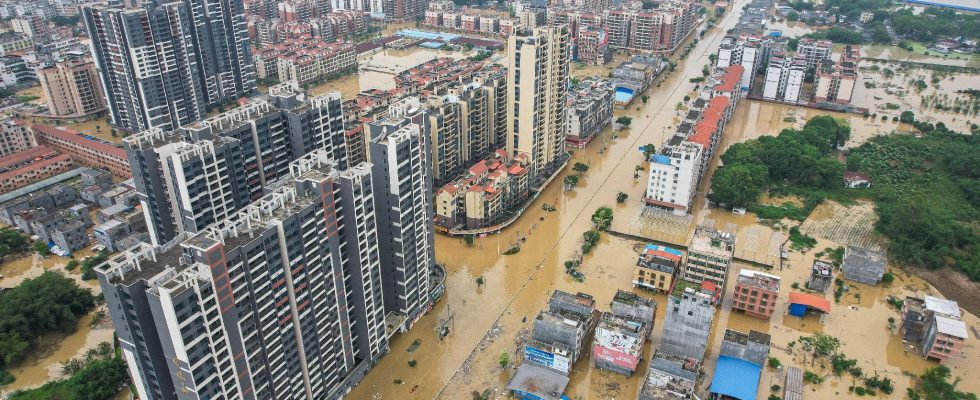The report is final. Asia was “the region in the world most affected by weather-related disasters” in 2023, with floods and storms causing the most victims and economic losses, the UN said on Tuesday.
“Climate change has exacerbated the frequency and severity of such events, profoundly impacting societies, economies and, most importantly, human lives and the environment in which we live,” said Celeste Saulo, director of the World Meteorological Organization (WMO) in a press release.
The impact of heat waves
The year 2023 was the hottest on record worldwide. And in Asia the impact of heat waves is becoming more and more severe, underlines the WMO, adding that the melting of glaciers – particularly in the Himalayan range – threatens the region’s water security.
Additionally, Asia is warming faster than the global average, with temperatures last year nearly two degrees Celsius higher than the average from 1961 to 1990. “The report’s findings are sobering,” said the head of the WMO.
“Many countries in the region experienced their hottest year on record in 2023, accompanied by a series of extreme conditions, from droughts and heatwaves to floods and storms,” the report said.
The State of Asia 2023 report highlights the accelerating pace of key climate change indicators such as surface temperature, glacier retreat and sea level rise, saying they would serious impacts on societies, economies and ecosystems in the region.
Heat, melting and flooding
The annual average near-surface temperature in Asia in 2023 was the second highest on record, at 0.91 degrees Celsius above the 1991-2020 average and 1.87 °C above the 1961-1990 average .
Particularly high average temperatures were recorded from western Siberia to Central Asia, and from eastern China to Japan, the report said. Japan experienced its hottest summer on record. As for precipitation, it was below normal in the Himalayas and the Hindu Kush mountain range in Pakistan and Afghanistan.
Meanwhile, southwest China suffered from a drought, with below-normal precipitation levels in almost every month of the year. The Asian high mountain region, centered on the Tibetan Plateau, contains the largest volume of ice outside the polar regions.
In recent decades, most of these glaciers have retreated, and at an accelerating rate, the WMO said. Twenty of the 22 glaciers monitored in the region showed continued mass loss last year.
The report said sea surface temperatures in the northwest Pacific Ocean in 2023 were the highest on record. Last year, 79 disasters associated with hydrometeorological hazards were reported in Asia. Of these, more than 80% were floods and storms, which caused more than 2,000 deaths. Nine million people were directly affected.
“Floods were by far the leading cause of death among events reported in 2023,” underlines the WMO, noting Asia’s continued high level of vulnerability to natural hazard events.
Following a typhoon, Hong Kong recorded 158.1 millimeters of precipitation in one hour on September 7, 2023, a record since records began in 1884. The WMO considers that it is urgent for national meteorological services to the region produces data to better warn of risks. “It is imperative that our actions and strategies reflect the urgency of this time,” insists Celeste Saulo. “Reducing greenhouse gas emissions and adapting to climate change is a fundamental necessity.”
